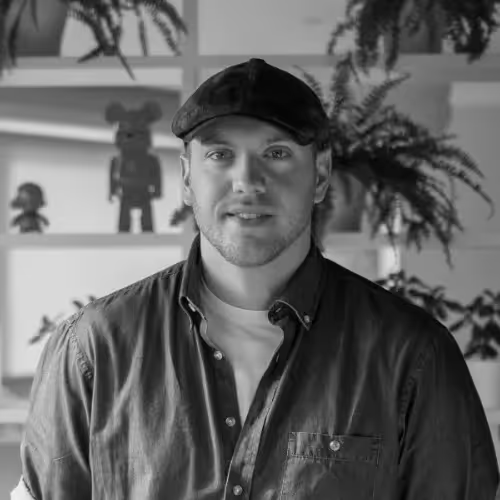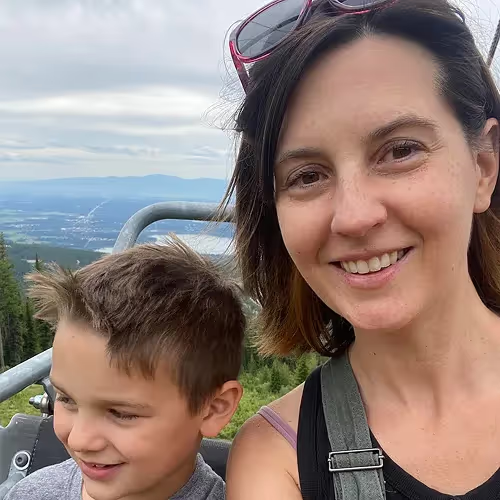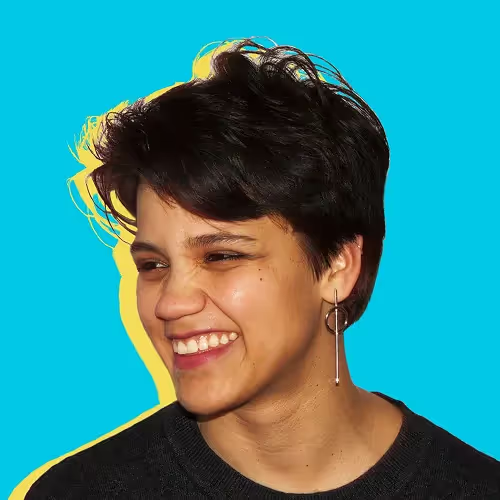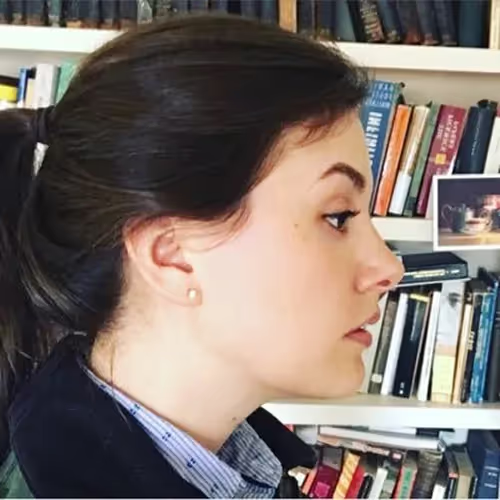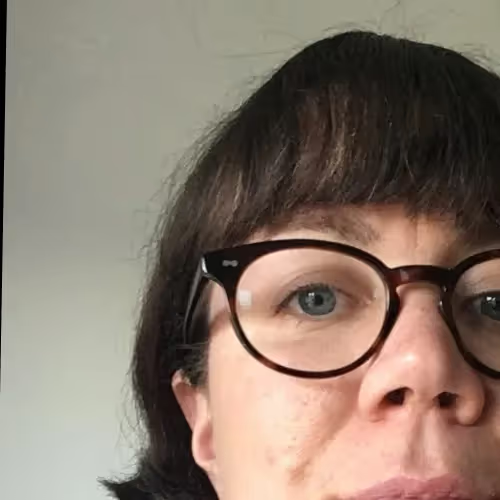Start using OOUX now, to get ready for your future as an XR designer.
Does a future of designing experiences for the Oculus Quest or Google Glass seem years beyond your horizon? If you are a UX designer working anywhere but GAFA (Google, Apple, Facebook, or Amazon), it probably does. But, designing for XR might be closer than you think. And guess what? Applying Object-Oriented UX to your current 2D screen design work will prep your neurons for a future of designing immersive experiences.
“OOUX is the missing link for the UX design in XR.”
- Cornel Hillmann, Author of UX for XR
UX’s coming role in the XR design world
XR stands for “extended reality” and is the umbrella term for virtual, augmented, and mixed reality (VR, AR, and MR, respectively). For most of us, XR is still a novelty. Most of you have probably played some Beat Saber at a friend’s or perhaps donned a headset at a conference. Some of you might even meet friends to play virtual mini-golf with your own headset. But few of us have been asked to join a team working on an XR experience.
XR is traditionally a field saturated with game designers, animators, 3D modelers, and developers. (And yes, I can say “traditionally” — this has been true for over 30 years.) The UX industry hasn’t significantly broken into this world yet, but if my conversation last year with Cornel Hillmann (author of the new book UX for XR (affiliate link)) and Gabriele Romagnoli (Head of Community at Tvori) is any indication, the XR world is starting to feel the need for our particular set of skills.

Why now? My hypothesis is that XR is starting to bleed into more mainstream problem-solving.
Until about 20 years ago, the Internet itself was a novelty for most of us. But over the last two decades, it’s become a necessity for doing business and communicating. Without good UX design, the Internet could’ve never become so widely and deeply entrenched in normal life.
The same phenomenon will happen with XR. It’s already edging into normal life through Snapchat filters and Zoom backgrounds. Still a novelty — you can use both of these platforms without engaging in their mixed reality features — but it’s fast becoming normalized, especially with the kids-these-days.
Last May, Luke and I headed to a nearby winery to celebrate a big win: we had just polished and published the last bit of the 22.8 hour-course material for the OOUX Masterclass! Good reason for a toast, eh?
At the winery, we started talking to our bartender, Savannah. With the aforementioned webinar coming up, VR was on my mind. I mentioned VR in passing and Savannah lit up.
Savannah’s four-year old son is deaf and autistic. She’s a worried mom — living in a small town in North Georgia wine country. She’s losing sleep wondering how many other kids there are like her son nearby. So, Savannah is incredibly excited about how VR and AR will help him. And she’d been doing her research. It was amazing to see the sparkle in her eyes as she told us about the XR solutions that might help her son:
- A multiplayer VR environment for deaf children to socialize and learn sign language together.
- A Google Glass feature that helps those with autism learn to read facial expressions.
- An AR app that can help others who don’t know sign language to read her son’s form of communication.
This mom is placing a ton of hope in the future of XR. She can sense how important and impactful it will be when XR breaks through into ubiquity.
And VR won’t just improve accessibility! It’s going to touch everything. We’ve already seen it make a huge impact during the covid-19 pandemic. How many work events, meetups, birthday parties, and conferences were rescued by going virtual? My husband and I had quite a few quarantine dates “traveling the world” through virtual tourism sites. Hillman mentions in his book that he overheard someone say “I’ve seen the pyramids of Giza in VR; it was amazing, actually amazing enough to take it off my bucket list.”
And that’s not all…
“It is widely expected that the new era will be dominated by spatial computing and wearable devices, driven by contextualized AI interfaces in XR.”
“The UX job market will be on fire, beyond anything we have seen yet, once the XR revolution unfolds. […] Considering the fact that the term experience in UX was more aspirational than literal when originally introduced, it now seems an almost prophetic manifestation for the true destination of designers, to design an immersive spatial dimension that previously never existed in UX.”
- Cornel Hillman, UX for XR
Sounds like a high-stakes job frontier for UX designers, right? VR is already making waves and doesn’t show signs of stopping! Let’s surf these waves, and make sure VR is delivered with solid UX.
OOUXing a VR environment for deaf children
How about we play this out? Think about that social VR environment that helps deaf children learn sign language together. First, we need great user research to answer questions like:
- What are the biggest challenges in learning sign language?
- What percentage of these children are neurodiverse? And how will that change how we design this environment?
- Will various ages have different competencies with sign language? For example, might we have much older children, teens even, who are beginners when it comes to sign language?
- What should be the role of conversation starters? How much prompting is appropriate?
- How should pairing work? Do we need different mechanisms for various ages, interests, and competency?
- What kind of moderation do we need in this community?
Game designers have a pretty sweet set of skills that often includes game testing and running focus groups. But they are not trained or equipped to find the answers to the kinds of vital questions I listed above.
The more that companies start tackling big problems with XR, the more they will need UX researchers to help teams gain real understanding of those big problems (instead of missing the mark).
With great research, we can start untangling the information architecture of these virtual places. We need to define the things, how they relate, what users can do to them, and the attributes that make up each object (cough, cough, ORCA process, cough).
But before we get into showing how OOUX might work for our example, let’s differentiate the above kind of work from the important — but different — work of UI. On our project, a VR UI designer might tackle challenges like:
- How do users select a conversation starter from the library?
- How do users slow down or speed up the signing on a story?
- How do users invite a friend to play a game?
- How do users make a game private or public?
- How do users flag a kid for bullying?
These are all great and useful questions, but without user research and some good ol’ OOUX-ing, we are getting ahead of ourselves.
(potential objects in CAPS)
Let’s imagine…
We haven’t quite defined a CONVERSATION STARTER. (It’s just something that one of the investors keeps talking about, but we aren’t really sure what they mean by that…)
We don’t really know how STORIES and GAMES relate to each other. Can a GAME be based on a STORY? Wait, is a STORY a kind of CONVERSATION STARTER? Or are these synonyms? Perhaps STORIES and CONVERSATION STARTERS are actually the same thing.
Ok, someone created a user story saying GAMES can be private or public. But wait, is it the GAME that has a privacy setting or is it actually the EVENT where the game is played? I don’t just go make Monopoly private. I make Monopoly at 4pm tomorrow with Jenny and Fred private.
These are the types of questions we need to answer before answering those UI questions.
It happens in run-of-the-mill-2D-UX-for-screens all the time: jumping to the how before figuring out, very explicitly, the what. And if we are not careful, we UXers are bound to typecast ourselves into UI work as we begin to get hired to solve problems in XR.
“Thinking object-orientedly helps us bridge between two different worlds. It helps us stay more on an abstract layer instead of going right into UI.”
- Cornel Hillmann
Applying OOUX
Ok, using user research, we can start figuring out the objects, their relationships, what hearing-impaired kids want to do with those things, and all the various attributes the things might have. Here’s some example findings from research and their OOUX takeaways.
UX Research finding #1
Interpreting stories that are communicated in sign language is the most fun way to learn sign language. But they’ve got to be the appropriate age level, in content and complexity. We might have young children who are very proficient in sign-language and older children who are just learning.
OOUX takeaways:
- STORY is a central object.
- Probably needs two distinct “level” attributes: level of maturity and level of difficulty. Maturity might be low but difficulty would be high. Or vice-versa.
UX Research finding #2
Kids want to talk to each other about the story, but they want a few conversation starters to pick from, to get the conversation going.
OOUX takeaways:
- CONVO STARTER is an object. And it’s basically a prompt for talking to peers.
- A STORY has 1 — many CONVO STARTERS. (Ok, so they are not the same thing!)
- Further question: can a CONVO STARTER have many STORIES it applies to? Are all CONVO STARTERS specific to a STORY, or do we have CONVO STARTERS like “who was your favorite character and why?” that can be reused across multiple STORIES?
UX Research finding #3
Games could be cool too, like Taboo in sign language, and it would be fun if that game would relate back to the story. But it doesn’t always have to. And kids need to know how many players they need for a game.
OOUX takeaways:
- A STORY has 0 — many GAMES.
- A GAME has 0–1 STORY.
- A GAME has an attribute for the number of players — actually two attributes: minimum and maximum.
UX Research finding #4
Older kids want to create events for watching a signed story together, but they want to input the story, usually from a website like Buzzfeed. The teens got excited about creating a kind of book club where they could meet up with other teens to practice sign language and just hang out. Events could be set to public or invite only.
What’s your OOUX takeaway?
As always, get clear on your objects first
From these research findings, we can start visualizing these objects and relationships at an abstract level before we get into 3D modeling, game mechanics, and UI.

After creating a system model that represents the direction we are going, the team might take a look and start asking important structural questions. That conversation might sound something like this:
“Does a user have to go through an event to access content? What about playing solo?”
“Is an event more like a “room”? Do you create a new ROOM, add STORIES and GAMES, and then invite other USERS?”
“Yeah, perhaps a ROOM has privacy settings, a library of STORIES and GAMES, and…EVENTS? EVENTS for the ROOM? Should that be a thing?”
“Soo…is a ROOM kind of like a group of USERS? Like a virtual clubhouse? But users could have a private solo ROOM too that has all the STORIES they are working through on their own?”
Imagine having this conversations weeks or months into prototyping.
After figuring out what all the things are and how they work together, we’ll be much better prepared to figure out how to visually represent these things and how users might intuitively manipulate them. Hillman writes “[…] it makes sense to approach spatial computing with an object-oriented design method, to capture the nature of the spatial XR world that is populated with digital 3D objects.” This is true for VR, and it’s just as true for the digital experiences you are designing now!
Taking that last team conversation into consideration, what might an object map for this project look like? Feel free to shoot me a picture on Twitter! #OOUXforXR
Want to hear me talk about this more? Watch the Webinar here
And hear even more UX 💗 VR chatter with Cornel on the OOUX podcast Episode 008 from a few months ago.
What do you think? Have you sensed any of these concerns, too? Have you seen any signs of OOUX in VR yourself?



